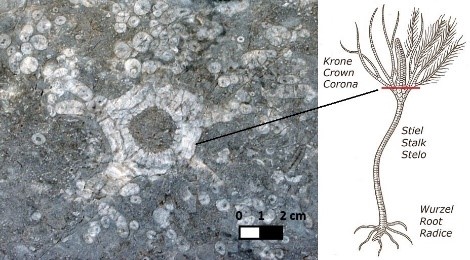In the limestone rocks at this stop there are sections through crinoids (sea lilies), the commonest fossils of the Auernig Formation after the calcareous algae which were mostly echinoderms growing firmly attached to the bottom and which still populate our seas today. They consist of a root, a stem and a crown with tentacles, which look very like flowers. When they die, sea lilies decompose very quickly and it is precisely for this reason that specimens complete in all their parts represent very rare finds. The thickness of the stems that can be seen here suggests that the sea lilies back then had a height of 50 – 100 centimetres.
Cerca
Ultimi Post
- The temporary exhibition “The Wonders of the Underworld – Ampezzo, 20th June 2020
- The Geological Museum in Ampezzo opens next Saturday
- The temporary exhibition “Fossil fish from the Friulian Alps” opens again
- Coronavirus Emergency – extraordinary closing
- Presentation conference – book “INSIDE THE CARNIC ALPS” – Udine, 25th June 2019

